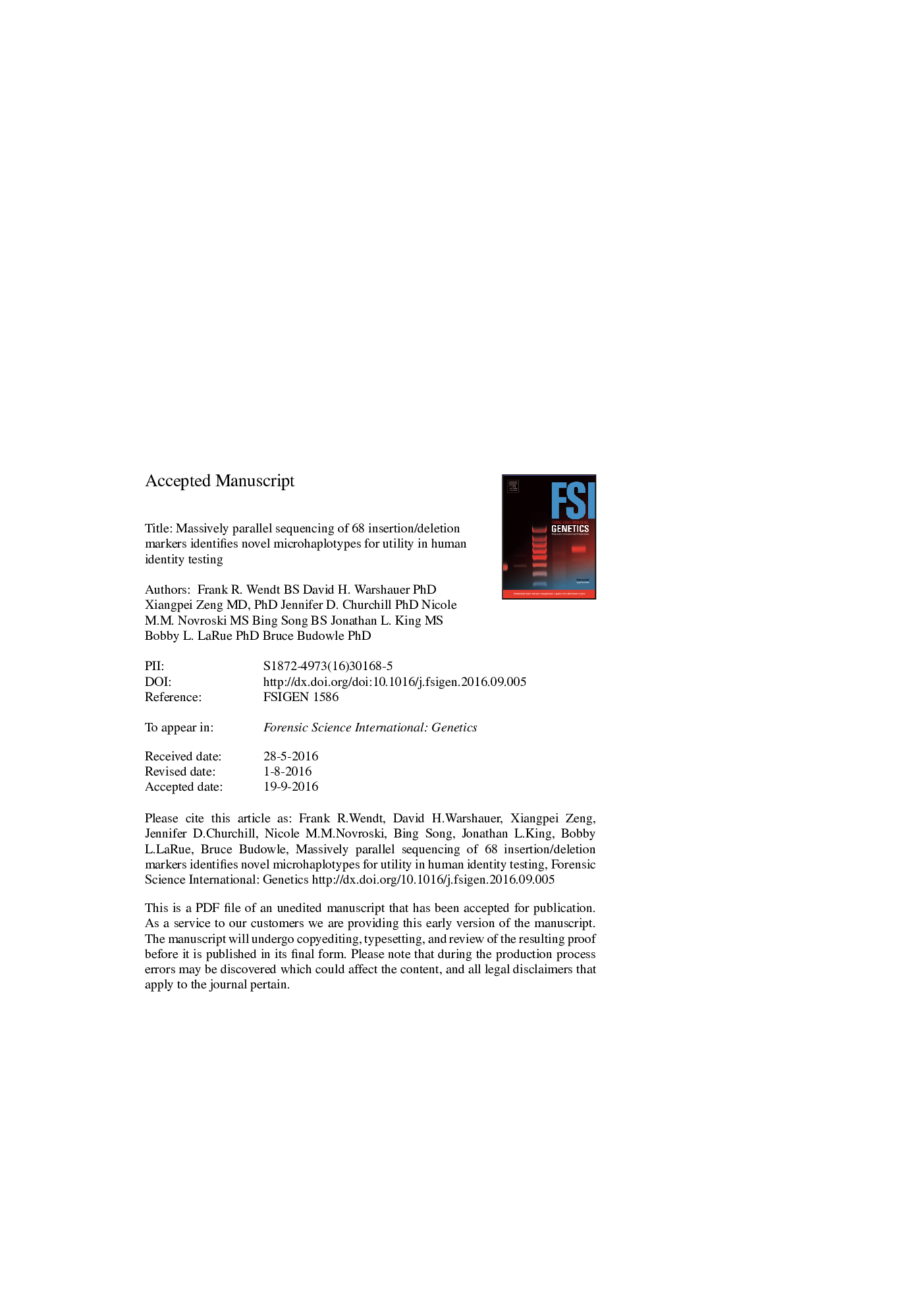| کد مقاله | کد نشریه | سال انتشار | مقاله انگلیسی | نسخه تمام متن |
|---|---|---|---|---|
| 6553461 | 160882 | 2016 | 29 صفحه PDF | دانلود رایگان |
عنوان انگلیسی مقاله ISI
Massively parallel sequencing of 68 insertion/deletion markers identifies novel microhaplotypes for utility in human identity testing
ترجمه فارسی عنوان
توالیابی عظیم موازی از 68 نشانگر درج / حذف نشان می دهد میکرو هپلوتیک های جدید برای ابزار در آزمایش هویت انسان
دانلود مقاله + سفارش ترجمه
دانلود مقاله ISI انگلیسی
رایگان برای ایرانیان
کلمات کلیدی
موضوعات مرتبط
علوم زیستی و بیوفناوری
بیوشیمی، ژنتیک و زیست شناسی مولکولی
ژنتیک
چکیده انگلیسی
Short tandem repeat (STR) loci are the traditional markers used for kinship, missing persons, and direct comparison human identity testing. These markers hold considerable value due to their highly polymorphic nature, amplicon size, and ability to be multiplexed. However, many STRs are still too large for use in analysis of highly degraded DNA. Small bi-allelic polymorphisms, such as insertions/deletions (INDELs), may be better suited for analyzing compromised samples, and their allele size differences are amenable to analysis by capillary electrophoresis. The INDEL marker allelic states range in size from 2 to 6 base pairs, enabling small amplicon size. In addition, heterozygote balance may be increased by minimizing preferential amplification of the smaller allele, as is more common with STR markers. Multiplexing a large number of INDELs allows for generating panels with high discrimination power. The Nextera⢠Rapid Capture Custom Enrichment Kit (Illumina, Inc., San Diego, CA) and massively parallel sequencing (MPS) on the Illumina MiSeq were used to sequence 68 well-characterized INDELs in four major US population groups. In addition, the STR Allele Identification Tool: Razor (STRait Razor) was used in a novel way to analyze INDEL sequences and detect adjacent single nucleotide polymorphisms (SNPs) and other polymorphisms. This application enabled the discovery of unique allelic variants, which increased the discrimination power and decreased the single-locus random match probabilities (RMPs) of 22 of these well-characterized INDELs which can be considered as microhaplotypes. These findings suggest that additional microhaplotypes containing human identification (HID) INDELs may exist elsewhere in the genome.
ناشر
Database: Elsevier - ScienceDirect (ساینس دایرکت)
Journal: Forensic Science International: Genetics - Volume 25, November 2016, Pages 198-209
Journal: Forensic Science International: Genetics - Volume 25, November 2016, Pages 198-209
نویسندگان
Frank R. BS, David H. PhD, Xiangpei MD, PhD, Jennifer D. PhD, Nicole M.M. MS, Bing BS, Jonathan L. MS, Bobby L. PhD, Bruce PhD,
